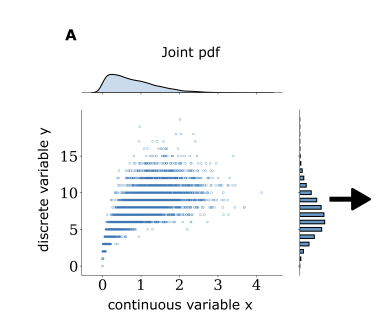Mixed vine copula flows for flexible modelling of neural dependencies
PubDate: Jul 2022
Teams: University of Edinburgh
Writers: Lazaros Mitskopoulos, Theoklitos Amvrosiadis, Arno Onken
PDF: Mixed vine copula flows for flexible modelling of neural dependencies

Abstract
Recordings of complex neural population responses provide a unique opportunity for advancing our understanding of neural information processing at multiple scales and improving performance of brain computer interfaces. However, most existing analytical techniques fall short of capturing the complexity of interactions within the concerted population activity. Vine copula-based approaches have shown to be successful at addressing complex high-order dependencies within the population, disentangled from the single-neuron statistics. However, most applications have focused on parametric copulas which bear the risk of misspecifying dependence structures. In order to avoid this risk, we adopted a fully non-parametric approach for the single-neuron margins and copulas by using Neural Spline Flows (NSF). We validated the NSF framework on simulated data of continuous and discrete type with various forms of dependency structures and with different dimensionality. Overall, NSFs performed similarly to existing non-parametric estimators, while allowing for considerably faster and more flexible sampling which also enables faster Monte Carlo estimation of copula entropy. Moreover, our framework was able to capture low and higher order heavy tail dependencies in neuronal responses recorded in the mouse primary visual cortex during a visual learning task while the animal was navigating a virtual reality environment. These findings highlight an often ignored aspect of complexity in coordinated neuronal activity which can be important for understanding and deciphering collective neural dynamics for neurotechnological applications.


